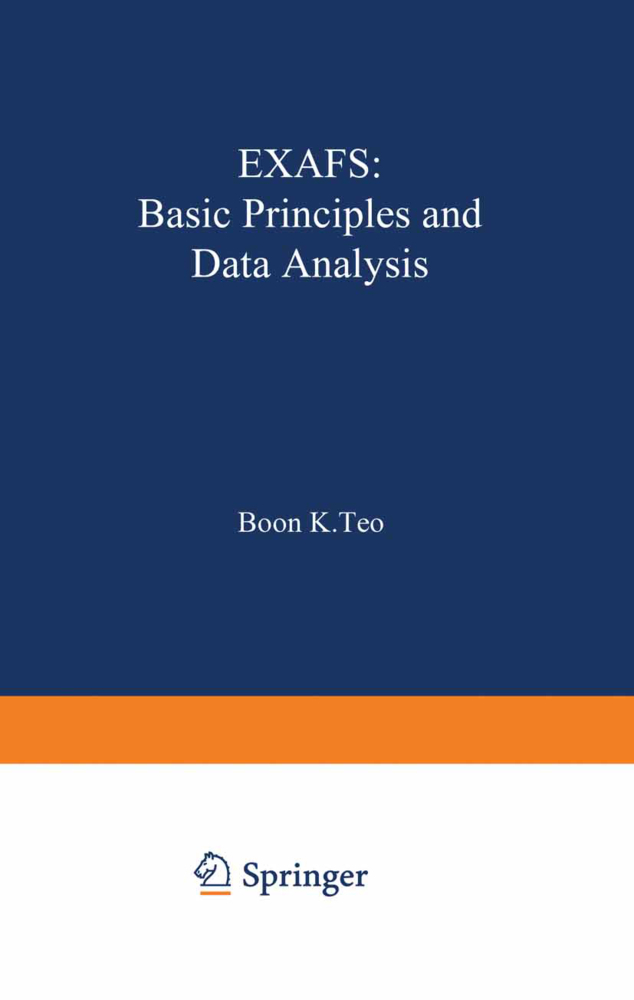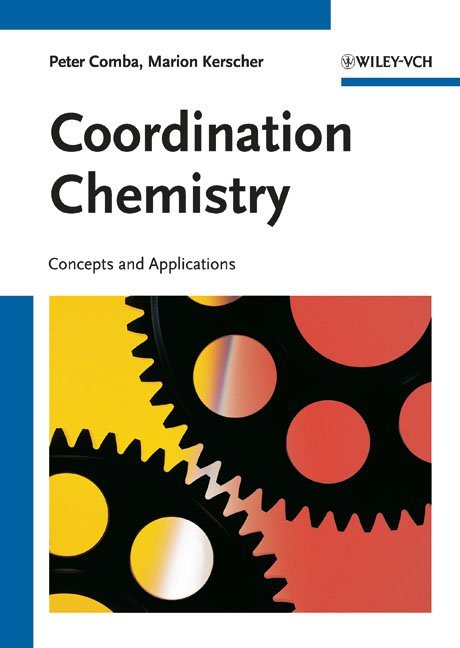EXAFS: Basic Principles and Data Analysis
EXAFS: Basic Principles and Data Analysis
The phenomenon of Extended X-Ray Absorption Fine Structure (EXAFS) has been known for some time and was first treated theoretically by Kronig in the 1930s. Recent developments, initiated by Sayers, Stern, and Lytle in the early 1970s, have led to the recognition of the structural content of this technique. At the same time, the availability of synchrotron radiation has greatly improved both the acquisition and the quality of the EXAFS data over those obtainable from conventional X-ray sources. Such developments have established EXAFS as a powerful tool for structure studies. EXAFS has been successfully applied to a wide range of significant scientific and technological systems in many diverse fields such as inorganic chemistry, biochemistry, catalysis, material sciences, etc. It is extremely useful for systems where single-crystal diffraction techniques are not readily applicable (e.g., gas, liquid, solution, amorphous and polycrystalline solids, surfaces, polymer, etc.). Despite the fact that the EXAFS technique and applications have matured tremendously over the past decade or so, no introductory textbook exists. EXAFS: Basic Principles and Data Analysis represents my modest attempt to fill such a gap. In this book, I aim to introduce the subject matter to the novice and to help alleviate the confusion in EXAFS data analysis, which, although becoming more and more routine, is still a rather tricky endeavor and may, at times, discourage the beginners.
1.2 Generation of X-Rays
1.3 Properties of X-Rays and Electrons
1.4 Electronic Structure of Atoms
1.5 Absorption Coefficients and Absorption Edges
1.6 Interactions of Photons and Electrons with Matter
2. Extended X-Ray Absorption Fine Structure (EXAFS) Spectroscopy
2.1 EXAFS Spectroscopy
2.2 Theory
2.3 Data Analysis
3. EXAFS Parameters
3.1 Variables and Functions
3.2 Effects of Important Parameters
3.3 Convention of Changing E0
4. Theory of EXAFS
4.1 Introduction
4.2 Derivations of EXAFS Theory
4.3 EXAFS of L Edges
4.4 The Photoelectron and the Excited Atom
5. Improvement of EXAFS Theory
5.1 Energy Threshold - The Phase Problem
5.2 Inelastic Scatterings - The Amplitude Problem
5.3 Static and Thermal Disorder Effects
5.4 Multiple Scattering EXAFS Formalism
6. Data Analysis in Practice
6.1 Data Reduction
6.2 Fourier Transform (FT)
6.3 Fourier Filtering (FF)
6.4 Curve Fitting (CF)
6.5 Parameter Correlation and the FABM Method
6.6 The "Difference" Technique
6.7 The Min-Max Method
6.8 Decomposition into Amplitude and Phase
6.9 The Beat-node Method
6.10 The Lee and Beni Method
6.11 The r Space Method
6.12 The Phase Linearization Method
6.13 The Regularization Algorithm
6.14 Other More Specialized Methods
7. Theoretical Amplitude and Phase Functions
7.1 Introduction
7.2 Theoretical Methods
7.3 Theoretical Amplitude and Phase Functions
7.4 Properties of Amplitude and Phase Functions
7.5 Comparison of Theory and Experiment
8. Multiple Scattering and Bond Angle Determination
8.1 Scattering Amplitude and Phase
8.2 Multiple Scattering
8.3 Comparison of Theory and Experiment
8.4 Angle Determination
8.5 Conclusion
Appendix I. ThePeriodic Table
Appendix II. X-Ray Absorption Edges and Characteristic X-Ray Emission Lines
Appendix III. Victoreen's C and D Values for True Absorption
Appendix IV. Fluorescence Yields
Appendix V. Backscattering Amplitude, Backscattering Phase, and Central Atom Phase.
1. X-Rays and Electrons
1.1 Introduction1.2 Generation of X-Rays
1.3 Properties of X-Rays and Electrons
1.4 Electronic Structure of Atoms
1.5 Absorption Coefficients and Absorption Edges
1.6 Interactions of Photons and Electrons with Matter
2. Extended X-Ray Absorption Fine Structure (EXAFS) Spectroscopy
2.1 EXAFS Spectroscopy
2.2 Theory
2.3 Data Analysis
3. EXAFS Parameters
3.1 Variables and Functions
3.2 Effects of Important Parameters
3.3 Convention of Changing E0
4. Theory of EXAFS
4.1 Introduction
4.2 Derivations of EXAFS Theory
4.3 EXAFS of L Edges
4.4 The Photoelectron and the Excited Atom
5. Improvement of EXAFS Theory
5.1 Energy Threshold - The Phase Problem
5.2 Inelastic Scatterings - The Amplitude Problem
5.3 Static and Thermal Disorder Effects
5.4 Multiple Scattering EXAFS Formalism
6. Data Analysis in Practice
6.1 Data Reduction
6.2 Fourier Transform (FT)
6.3 Fourier Filtering (FF)
6.4 Curve Fitting (CF)
6.5 Parameter Correlation and the FABM Method
6.6 The "Difference" Technique
6.7 The Min-Max Method
6.8 Decomposition into Amplitude and Phase
6.9 The Beat-node Method
6.10 The Lee and Beni Method
6.11 The r Space Method
6.12 The Phase Linearization Method
6.13 The Regularization Algorithm
6.14 Other More Specialized Methods
7. Theoretical Amplitude and Phase Functions
7.1 Introduction
7.2 Theoretical Methods
7.3 Theoretical Amplitude and Phase Functions
7.4 Properties of Amplitude and Phase Functions
7.5 Comparison of Theory and Experiment
8. Multiple Scattering and Bond Angle Determination
8.1 Scattering Amplitude and Phase
8.2 Multiple Scattering
8.3 Comparison of Theory and Experiment
8.4 Angle Determination
8.5 Conclusion
Appendix I. ThePeriodic Table
Appendix II. X-Ray Absorption Edges and Characteristic X-Ray Emission Lines
Appendix III. Victoreen's C and D Values for True Absorption
Appendix IV. Fluorescence Yields
Appendix V. Backscattering Amplitude, Backscattering Phase, and Central Atom Phase.
Teo, Boon K.
| ISBN | 978-3-642-50033-6 |
|---|---|
| Artikelnummer | 9783642500336 |
| Medientyp | Buch |
| Auflage | 1986 |
| Copyrightjahr | 2014 |
| Verlag | Springer, Berlin |
| Umfang | XVIII, 349 Seiten |
| Abbildungen | XVIII, 349 p. |
| Sprache | Englisch |











